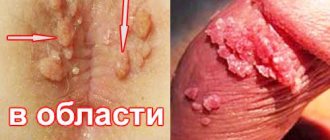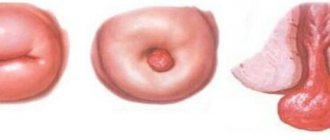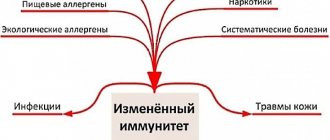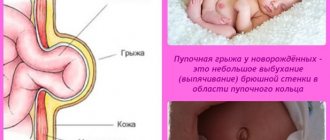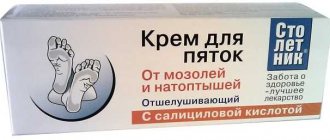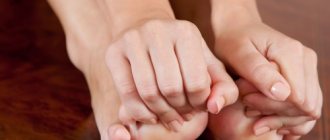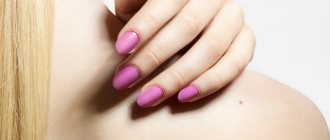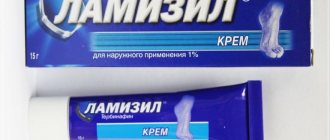Home » Health » How to cure dry calluses on the toes and sole of the foot at home?
Dry calluses that appear on the sole of the foot or toes give a person a lot of unpleasant sensations. Unlike a regular callus, which is a swollen area of skin with lymph, a dry callus is a keratinized area of skin without lymph fluid inside.
When the skin layer becomes dense, the pain goes away, and it seems to the person that the problem has resolved itself. But such neglected calluses can take root under the skin, and it will be much more difficult to get rid of them.
It is better to get rid of calluses with a core immediately. It can cause severe inflammation and pain if microorganisms get into the inner layer of the skin.
How to cure dry callus? If you decide to get rid of dry calluses on your toes, you can treat them at home. At the pharmacy you can buy good medications for the treatment of dry calluses. Basically, these are creams, ointments and patches.
Important! Apply the cream or ointment directly to the corns, avoiding areas with healthy skin.
- Salicylic ointment. Despite its low cost, it is effective for treating corns, especially at an early stage of appearance. It contains salicylic acid, which softens the keratinized area, disinfects and restores the skin. As an alternative, you can use salicylic patches “Salipod” or “Urgo”, which have a similar effect.
- Ointment "Super Antimozolin". It is not inferior in its medicinal properties to salicylic ointment, due to lactic acid and urea in its composition. With daily use of the ointment, the corns will quickly disappear.
- The “Five Days” paste based on Vaseline and lanolin has a quick effect on the rough area, softens it, and after two to three days you can carefully remove the callus.
- The Compid patch contains colloidal substances that help soften the growth. This patch is effective at all stages of callus formation; for each there is a separate type of “Compid” patch.
Sometimes a core forms under a dry callus, in which case medical intervention will be required. In rare cases, it is necessary to do cauterization with dry nitrogen (cryotherapy method) or remove the callus with a laser.
Dry callus – what is it?
A dry callus is an area of dead and hardened skin that appears as a result of excess pressure on the dermis or its friction. Such growths most often form on the soles or palms. Sometimes dry calluses do not bother a person, but sometimes they cause him to experience pain.
A dry callus has clearly defined boundaries and has a core in its center. Sometimes the appearance of such a skin growth can be caused by excess body weight, violations of the rules of care for the lower extremities, incorrectly selected shoes, and vitamin deficiency.
People prone to hyperkeratosis often suffer from dry calluses. To cope with this problem, you need to maintain the normal water balance of the dermis, moisturize it by applying special creams to the feet.
If a dry callus begins to hurt, then the person’s quality of life deteriorates, he becomes unable to perform his daily duties, since the pain occurs while walking.
It is worth taking into account that dry calluses can indicate serious health problems. For example, they often appear in people with diabetes. Treatment of any skin growths in such patients is lengthy and labor-intensive.
Other risk factors that increase the likelihood of developing dry callus include:
- Bursitis.
- Flat feet.
- Vitamin A or vitamin E deficiency.
- Osteoarthritis.
- Heel spur.
All these disorders can become triggers for the formation of dry callus. Therefore, a person is not always able to accurately determine the causes of the appearance of such skin growths. If the etiological factor is not eliminated, then it will not be possible to cope with the problem. The callus will appear again and again.
Dry calluses do not form in one day. It grows over a long period of time. As the pathology progresses, the skin tubercle will increase in size.
The callus can be with or without a core. If such a root is the main callus, then you need to get rid of it first. When the rod remains inside, dry callus removal will not be successful. After some time she will appear again.
Sometimes it is not possible to cope with dry callus using conservative methods. In this case, its removal is required.
To clarify the cause of the callus and determine the optimal method of treating it, you need to visit an orthopedist or dermatologist. A professional examination is the key to successful therapy.
Sometimes people confuse dry calluses with warts, which complicates the treatment process. Typically, plantar warts are smaller than calluses. In addition, they rise more strongly above the surface of the skin. The treatment features for these two types of skin growths are different.
Why do they appear?
Causes of keratinized skin on the legs or arms include factors that cause pressure or friction. Women who love dress shoes with high heels, narrow toes or thin soles suffer from such defects 10 times more often. Such shoes put pressure on the foot, do not provide sufficient shock absorption, and injure the plantar part of the foot. Prolonged walking subjects certain areas of the legs to increased stress. As a result, as a protective reaction, the skin becomes dense and rough. At the point of pressure or friction, blood circulation deteriorates; dead cells do not have time to exfoliate in time and accumulate in layers, forming a compaction.
Other reasons include:
- increased sweating of the feet;
- old age (more than 50% of people over 65 years old have thickening of the skin);
- standing work;
- excess body weight;
- dry skin of the feet;
- love of walking barefoot (the skin thickens to protect itself);
- pathological change in the shape of the toes or the structure of the foot (bunion, hammertoe, bone spurs, flat feet);
- inflammatory diseases and deformities of the foot joints (arthritis, arthrosis);
- gait disturbances;
- tendency to swelling of the extremities;
- playing sports that increase the load on the foot (runners, ballerinas, football players);
- bad habits.
Calluses on the hands usually appear due to the specifics of the profession.
Most often they cause difficulties:
- musicians who play the violin, viola or guitar;
- athletes (gymnasts, tennis players, badminton players, weightlifters);
- cooks who constantly work with the same kitchen tools, for example, a knife or rolling pin;
- people who work a lot with household tools (hammer, pruning shears, axe, shovel) without protective gloves.
The risk group for the formation of calluses and corns on the feet includes patients with chronic pathologies, the complication of which is a change in gait.
Such diseases include:
- diabetes;
- vascular disorders that impair blood circulation and metabolic processes in the lower extremities;
- Parkinson's disease;
- cerebral paralysis.
In the presence of these chronic pathologies, it is recommended to undergo regular examinations by a podiatrist and have a medical pedicure for early detection and elimination of foot problems and to prevent complications.
Symptoms of dry callus
Dry calluses have a number of signs that make it possible to distinguish them from warts.
Symptoms of calluses are as follows:
- Dry skin in the area of callus formation.
- The color of the neoplasm is yellow or yellowish-white.
- The surface of the callus is most often rough, although it can be smooth.
- The shape of the callus is round or oval. They may rise slightly above the skin or be flat.
- The sensitivity of the skin in the callus area is reduced. Sometimes there are signs of inflammation.
- When you press on the callus, the person will experience pain.
- If the callus has a core, it will be visible to the naked eye. The root is located in the center of the callus.
- The pain that occurs during pressure on the callus causes a person to limp and improperly distribute the load on the foot. This can cause the development of arthrosis and curvature of the foot.
- Warts, unlike calluses, are viral in nature. The presence of papillomavirus in the body can be determined in the laboratory by submitting tissue for examination.
If the callus does not have a core, then it may not manifest itself in any way. There will be no pain or signs of inflammation.
Favorite places for calluses to form are:
- Finger pads.
- The outer side of the little toe or big toe.
- Heels.
- Palms.
- Gaps between toes.
If a callus forms against the background of chronic diseases, then the leg as a whole will suffer from a lack of blood circulation. At the same time, her skin becomes thinner, loses elasticity, and acquires a bluish color.
Symptoms of calluses on the leg
The callus may have a foot. Outwardly, it will look like an ordinary callus, but the root can be seen in its center. These calluses are mushroom-shaped. The upper cap turns into a long stem. This callus hurts and can sometimes bleed, especially with increased friction.
Symptoms of dry callus in a child
Dry calluses are less common in children than in adults. This is due to the accelerated metabolism in the body. The skin of babies is characterized by increased plasticity, and dermal cells in children regenerate faster. Therefore, wet calluses are more often diagnosed in children.
Dry calluses in childhood develop against the background of various diseases, or when metabolic processes are disrupted. A frequent companion to such skin growths is vitamin deficiency. In this case, the symptoms of vitamin deficiency will come to the fore. The child will lose his former activity, the condition of his hair and nails will worsen, and his skin will become pale.
How to distinguish a dry callus from a plantar wart?
Warts are an external manifestation of the human papillomavirus, although their structure may resemble dry calluses.
A correct diagnosis can be made based on the following signs:
- The size of warts does not exceed 0.5 cm in diameter, while dry calluses are much larger.
- Dry calluses appear in areas of high friction, and warts can form anywhere.
- Warts are located in groups, and calluses are almost always single neoplasms.
Black dry callus
Black dry calluses can frighten a person. Discoloration may be caused by insufficient blood circulation in the lower extremities, or necrosis of callus tissue. In this case, the rod, which is located in its center, becomes black.
Sometimes the color of the callus changes due to a failure in metabolic processes. At the same time, melanin begins to accumulate under the keratinized tissue, which gives the skin growth a dark color.
In any case, the change in color of the callus should not be ignored. If it darkens, you need to contact a dermatologist or surgeon.
Folk remedies
To soften the tissues on the feet when calluses appear, you need to take foot baths. This procedure is a preparatory procedure before using compresses, ointments, and creams. Necessary:
- Pour 5 liters of water into a basin.
- Add a small piece of grated laundry soap. The water must be hot.
- Keep your feet in it for up to 20 minutes.
To increase the effectiveness of this procedure, the following additional agents are added to the water:
| Means | Peculiarities |
| Salt | Sea food and table food are used. The solution reduces pain and promotes exfoliation. For every liter of water you need to take 1 tbsp. l. salt |
| Milk | If the dry callus is old, then pour 1 liter of this product into the basin. The product has a softening effect |
| Baking soda | Has a softening effect. The stratum corneum loosens, making it easier to remove. You need to take 10 tsp. for 4 liters of water |
| Potassium permanganate | Use if the callus is not very old. The product gives a slight cauterizing effect. You need to use enough powder so that the water is slightly pink. |
| Starch | Use clean water rather than soapy water as a base. For 4 liters take 4 tbsp. l. product. The product helps soften dead tissue |
| Herbal infusions | Usually they use celandine, calendula, St. John's wort, and chamomile. Onion skins will do. You need to take 3 pinches of any raw material per 2 cups of water. You need to boil the product for 10 minutes and leave for another 15 minutes. Then add liquid to the basin |
After steaming, you need to rub the area with the growth with a stiff brush to remove at least part of the keratinized particles. Then you need to wipe the skin dry and apply the medicine. If you plan to use cauterizing compounds (alcohol and acids), then the use of a file and pumice is prohibited.
After the baths, you can use compresses. Several effective recipes:
| Means | Recipe | Application | Action |
| Potatoes and flaxseeds |
| Apply the composition to the callus. Wash off after 25 minutes | The product has a softening effect |
| Lemon | Use both peel and pulp | Apply them to the callus for 20 minutes | The product has a cauterizing effect due to acid |
| Aloe |
| Apply the inside to the growth for half an hour | Aloe has bactericidal and softening effects |
| Apple vinegar | Mix 1 tbsp. l. apple cider vinegar, baking soda and salt | Spread the paste over the callus. Keep the compress on all night | The product has a softening effect |
| Bulb onions |
| Peel off the sheets and apply to the callus for 25 minutes | The product loosens dead tissue |
| Fresh meat | Purchase (no more than 3 hours after slaughter) | Apply to the callus overnight | The compress has a softening effect |
| Celandine |
| Drip directly onto the growth | The product eats away the callus |
It is recommended to lubricate dry calluses with any vegetable oils. Coconut, sunflower, olive, corn, rapeseed, and flaxseed are suitable. Castor oil is also used. You can also add ethers to them. The ideal option is tea tree oil. Such solutions soften keratinized tissue.
To enhance the effect of the compress, you need to cover it with plastic wrap or wax paper and insulate it with a sock.
Reasons for the formation of dry calluses
There are external and internal causes that lead to the formation of dry calluses. External reasons include:
- Wearing tight shoes that rub your feet. This also includes wearing high-heeled shoes.
- Wearing hard shoes without socks or footprints.
- Wearing stockings, socks or tights that do not fit. The folds that form during this process can cause the formation of calluses.
- Excessive stress on certain areas of the body. Calluses often appear in runners, ballerinas, gymnasts, and guitarists.
- Long walks on gravel and rocks.
- Violation of personal hygiene rules. This problem is especially relevant for people suffering from hyperkeratosis. If you do not clean off the rough areas of the dermis, over time this can lead to the formation of skin calluses.
Internal causes that can trigger the appearance of dry calluses include:
- Aging of the body. With age, the skin loses its ability to retain moisture and loses its former elasticity, which can cause the formation of calluses.
- Flat feet and posture problems.
- Disturbances in the functioning of the digestive system.
- Diabetes.
- Insufficient blood supply to the lower extremities.
- Rheumatoid arthritis.
- Neurological diseases.
- Vitamin deficiency in the body. The condition of the skin is negatively affected by a lack of vitamins A, B2, E. The skin regenerates worse, loses elasticity and firmness.
- Skin infections, such as foot fungus. Mycosis of the feet leads to roughening of the skin, its stratum corneum thickens, nutrition deteriorates, and sensitivity decreases. All this can trigger the formation of dry calluses.
- Hyperhidrosis of the feet.
- Presence of a bone spur.
- Obesity. In overweight people, the load on the lower limbs increases, which can lead to the formation of calluses. In addition, such patients more often suffer from edema, and it is more difficult for them to choose suitable shoes.
Complications of dry callus
Most often, dry calluses do not pose any serious threat to human health. They can create certain inconveniences while walking. Thus, a dry callus with a core often responds with pain when pressing on it. In addition, skin growths are a cosmetic defect.
However, if you ignore the problem for a long time and do not treat dry callus, it can lead to a number of complications, including:
- Root formation with damage to soft tissues and involvement of nerve fibers in the pathological process.
- Lameness.
- Infection with the formation of inflammation and ulcerative processes.
Inflammation of the callus will be indicated by symptoms such as:
- Pain begins to bother a person not only when applying pressure to the callus, but also at rest.
- Deterioration in general health.
- Increased body temperature. The skin in the area of the callus may feel hot to the touch.
- Hyperemia of the tissues surrounding the callus.
- Pus may leak from cracks and wounds in the callus.
- Improper removal of calluses can lead to scar formation.
- The appearance of deep cracks in calluses. The skin that forms the callus is deprived of normal nutrition. If significant stress continues to be placed on it, it can burst and hurt. Such cracks take a very long time to heal, dirt and sweat get into them, which becomes an ideal environment for the proliferation of pathogenic flora and the addition of a fungal infection.
People with metabolic disorders definitely need to get rid of dry calluses. This primarily concerns patients with diabetes, since even minor damage to the skin in such patients can lead to gangrene and amputation of the limb.
It must be taken into account that skin calluses tend to progress. Over time, they increase in size, capturing new areas of the skin. The longer you ignore a problem, the more difficult it will be to get rid of it in the future.
The best creams for calluses and corns
For dry calluses, medications in the form of a cream are used. Such compositions are well absorbed, do not leave a greasy sheen and do not stain clothes. The best creams for corns are made on the basis of lactic, benzoic, salicylic acids and emollient natural oils. Their use minimizes complications and allows you to quickly get rid of rough growths on the arms and legs.
SVR Foot Cream Xerial 50 Extreme Creme Pieds
5
★★★★★
editorial assessment
97%
buyers recommend this product
Xerial's formula contains urea, salicylic acid, shea butter and glycerin. The cream has a light texture, so it is evenly distributed and instantly absorbed, leaving the skin smooth and soft.
Active substances exfoliate dead cells, soften rough areas and increase the elasticity of the epidermis. The drug is suitable for eliminating calluses on the feet, palms and elbows. Sold in a 50 ml tube.
Advantages:
- stimulates renewal of the stratum corneum;
- retains moisture in cells;
- suitable for sensitive skin;
- has no smell.
Flaws:
- The tube runs out quickly.
The cream solves many problems of dry skin and is considered a good remedy for the prevention and treatment of corns.
SuperAntimozol
4.9
★★★★★
editorial assessment
96%
buyers recommend this product
The cream contains urea, salicylic, lactic acids and herbal additives that have a bactericidal and softening effect. The cream is designed to eliminate corns and, with regular use, completely eliminates unpleasant formations. Sold in a 75 g tube along with instructions.
Advantages:
- homogeneous composition;
- deep hydration;
- healing of cracks;
- softening callous growths;
- elimination of unpleasant odor.
Flaws:
- does not help with calluses with a core.
SuperAntimozol acts delicately and rarely provokes side effects, therefore it is considered a safe and effective treatment.
Intensive cream Footprim
4.9
★★★★★
editorial assessment
95%
buyers recommend this product
Bulgarian cream Footprim includes natural green tea extract and salicylic acid. Active substances prevent the destruction of collagen, block the appearance of dead cells and stimulate blood circulation. The product destroys bacteria, moisturizes and provides complete care for the skin of the feet. Sold in plastic packaging of 50 ml.
Advantages:
- disinfects;
- softens rough areas;
- increases skin elasticity;
- exfoliates dead cells.
Flaws:
- The minimum course of treatment is 2-4 weeks.
Footprim is a multi-action cream that prevents flaking of the feet and copes with old corns.
EVO with urea
4.8
★★★★★
editorial assessment
92%
buyers recommend this product
The main component of the cream is urea, which prevents dry skin, the appearance of calluses and cracks between the fingers. Additional substances include: extracts of celandine, pine needles, oak bark, olive and coconut oil. The drug stimulates metabolic processes, makes the skin elastic, soft and prevents the development of fungal infections. Comes in a 50 ml tube.
Advantages:
- softens and nourishes the skin;
- eliminates unpleasant odor;
- heals wounds;
- It is used sparingly.
Flaws:
- Individual intolerance to the composition is possible.
EVO cream is recommended for softening rough, cracked feet and eliminating dry calluses.
Nezosol
4.8
★★★★★
editorial assessment
88%
buyers recommend this product
The effectiveness of Nemozol cream is ensured by glycolic acid, sulfur, salicylic acid, glycerin, and castor oil. The composition has a fungicidal, antiseptic, keratolytic effect, therefore it quickly softens calluses, heals abrasions and wounds. Sold in a 5 g plastic jar.
Advantages:
- softens dry calluses;
- renews the skin of the feet and heels;
- protects against fungus;
- inexpensive.
Flaws:
- aggressive composition can cause irritation;
- very small volume.
You need to use this cream carefully. Steam the callus and dry your foot. Make a hole in the patch the size of the corn and fix the callus in the slot. Using a toothpick, apply Nemozol in an even layer and cover with another bandage on top. After 1-2 days, all that remains is to remove the bandage and clean the exfoliated areas with pumice.
Mozolka “Green Street”
4.7
★★★★★
editorial assessment
85%
buyers recommend this product
Mozolka cream-balm is a storehouse of valuable ingredients that have a beneficial effect on skin health. Contains emollient natural oils, amaranth and papaya extracts, salicylic acid and Bacillus enzyme. The composition improves blood circulation, reduces pain, restores the structure of the skin, and makes the legs well-groomed and beautiful. Volume 15 ml.
Advantages:
- many natural ingredients;
- removes discomfort when walking;
- eliminates excessive dryness;
- heals small cracks.
Flaws:
- small tube.
The cream is used 2-3 times a day, gently rubbing into the skin of the feet. There is no need to additionally steam your feet before treatment - you can apply it as is.
READ ALSO
11 Best Creams for Cracked Heels
Diagnosis of dry calluses
A person can diagnose dry callus independently, focusing on its main symptoms. However, if there are any doubts about the nature of the neoplasm, you should contact a specialist. A dermatologist will examine the skin growth and make recommendations regarding its treatment.
Differential diagnosis of dry callus is carried out with warts, joint pads, keratoderma, calluses that appear against the background of psoriasis.
What products are used to remove calluses?
Cutting the callus on your own can lead to various complications, the easiest of which is infection.
To remove calluses, preparations that contain salicylic acid are most often used. It has a keratolytic effect, that is, it slowly eats away the cells of the growth, leading to its disappearance.
You can also use preparations containing lactic acid to remove calluses. Under the influence of such products, the skin softens, so it is not difficult to clean off the roughened stratum corneum.
In general, all medications for removing calluses have a single mechanism of action - they soften the skin, after which it can be easily removed. However, it is not always possible to get rid of skin growths in this way.
If the callus is core, then it will not be possible to get to the base of the root with the help of drugs. Therefore, after some time, the skin callus will appear again.
In addition, all medications have contraindications and side effects, so you should consult a specialist before starting treatment.
TOP 3 methods for treating dry calluses
Effective methods for treating dry calluses include:
- Removing calluses using laser. This method allows you to quickly get rid of old dry calluses.
- Callus removal using cryodestruction. In this case, it is treated with liquid nitrogen.
- In addition, you can get rid of dry calluses in the office of a hardware pedicurist.
In rare cases, excision of the callus using a scalpel and scissors is indicated. Each of these methods needs to be considered in more detail.
Cryodestruction of dry callus
Cryodestruction allows you to quickly and safely get rid of skin calluses, so this method is one of the most popular. It has virtually no contraindications and does not produce side effects.
The essence of the method comes down to treating the callus with liquid nitrogen. The doctor places the device's applicator on the skin defect for a few seconds, freezing its cells.
After the procedure, a bubble is formed on the skin filled with serous contents. After a few days, the blister bursts on its own, forming a thin film on the surface of the dermis. When it comes off, young and healthy skin will already be formed underneath. The duration of the procedure does not exceed several minutes.
If the callus is large, several sessions of cryodestruction may be required.
Removing dry callus with laser
Removing calluses using a laser allows you to get rid of skin growths without pain. Small vessels are instantly cauterized, so there is no chance of bleeding. The procedure must be performed by a professional.
The method has a number of contraindications, including:
- The period of bearing a child.
- Breast-feeding.
- Diabetes.
- Age under 14 years.
- Diseases of the cardiovascular system.
During the procedure, the doctor treats the callus with a laser beam. Under its influence, the callus cells simply evaporate. The treatment area is covered with a thin crust. After 10-14 days, it disappears, and new skin forms underneath it.
Callus removal using hardware pedicure
If the callus is not too large and not old, then you can remove it using a hardware pedicure. The procedure is painless and therefore does not require anesthesia. It can be performed by a cosmetologist who has a medical education, or a podologist.
In the process of removing calluses, the doctor uses a drill with various attachments. He removes the rough skin layer by layer, after which he drills out the core of the callus, if there is one. The procedure does not involve any risk of injury, so it can be performed even by people with diabetes.
To avoid infection, the doctor must strictly follow the rules of antiseptics. It’s good when a specialist uses disposable attachments.
If a person has a high pain sensitivity threshold, then local anesthesia will be required before removing the callus.
Treatment
Treatment methods for calluses of different localizations are largely similar, since keratinization of tissues has a single mechanism of occurrence, symptoms and unaesthetic appearance.
Calluses on fingers
Dry calluses on the toes tend to cause excessive growth of keratinized tissue, interfere with normal life, and affect gait due to shooting pains. Typically, finger calluses have a core, change bone tissue, and lead to the appearance of overgrowth of the bone of the thumb. Effective treatment methods are:
- applying a patch with pepper base (Salipod, Cosmos);
- rubbing in creams and ointments based on pepper, ethers, medicinal substances;
- application of traditional medicine methods.
If traditional treatment is ineffective, they resort to hardware methods: nitrogen treatment, hardware pedicure, cryodestruction and others. When treating with folk remedies, it is fashionable to use any means until positive results are achieved.
On the big toe and little toes
Calluses on the big toe tend to grow, forming a large corn. With core calluses, there is a risk of leaving the root behind when removed independently. If there are no clinical improvements from home treatment methods, then it is necessary to resort to radical methods of removing callus in cosmetology clinics.
On the foot and heel
A common type of callus that can be treated by steaming the feet, applying a pepper patch, and home methods (vinegar, celandine, alcohol tinctures). Heel calluses must be regularly rubbed with pumice and steamed to soften the tissue and remove the callus, if any.
On the hand
Calloused hands are an aesthetic defect that occurs not only among men in difficult professions, but also among women who engage in specific work, sports, and carrying bags. The easiest way to get rid of calluses on your hands is to just find modern pharmacy creams in pharmacy chains and use them as a regular hand cream.
For the treatment of dry calluses to be effective, you should properly care for the affected skin. The therapeutic arsenal against dry calluses includes many different means and methods: medications (ointments, creams), hardware techniques and surgery, homemade recipes from nature, patches with irritating components. Regardless of the location of calluses on the feet and hands, the treatment methods are the same.
Surgical removal of callus
Sometimes a person has a number of contraindications to cryotherapy or laser callus removal. In this case, the doctor may recommend excision of the skin growth using a scalpel.
Indications for surgical intervention may be the following:
- The callus hurts a lot, and it is impossible to get rid of it using conservative methods.
- The skin in the area of the callus becomes inflamed, swollen, and festers. The patient has difficulty wearing shoes.
- The skin changes its normal color and becomes purple or purple.
The doctor excises the callus using a scalpel and surgical scissors. The wound is fixed with adhesive tape. The procedure requires local anesthesia. After some time, the edges of the wound tighten, but a scar may remain at the treatment site.
It should be remembered that no treatment method provides a 100% guarantee that the callus will not reappear. If a person does not eliminate the cause that leads to the formation of calluses, then a relapse will definitely occur. Therefore, if the callus reappears, you should consult a doctor.
Answers to popular questions
- What medications can be used to treat dry calluses?
To combat calluses, you can use the drug Antimozolin. It is available in the form of an ointment, which is applied to the callus after preliminary steaming of the skin of the feet. In addition, you can use Bensalitin or Namozol 911. In order for the treatment to be as effective as possible, it is necessary to study in detail the instructions for use of these products.
- Do you always need to remove dry callus?
Radical treatment is not always required. If a skin growth has just begun to form, then you can get rid of it with the help of high-quality foot hygiene. You should definitely give up impractical shoes. For a speedy recovery, you can use moisturizing ointments. If you follow all the recommendations, then after a while the callus will go away on its own. It is necessary to remove a dry callus when it causes pain and discomfort and causes a person to limp. Dry calluses that have a root, as well as growths that have become inflamed, must be removed.
- If cracks appear on the callus, what should you do?
To prevent infection from getting into the crack, it must be treated with antiseptic solutions. For this purpose, iodine or hydrogen peroxide can be used. After disinfecting the crack, it is covered with a sterile bandage and fixed with an adhesive plaster. For rapid tissue regeneration, Lekkos, Ambulance, Radevit ointment can be used.
The best adhesive plasters for calluses
Calluses cause severe discomfort when walking and make physical activity difficult. The patch soothes pain, minimizes shoe contact with abraded skin and prevents bacteria from entering the wound. There are patches on sale for dry and wet calluses, which differ from each other in the set of active ingredients.
Compeed patch for wet calluses on feet MixPack
5
★★★★★
editorial assessment
97%
buyers recommend this product
Compeed is designed specifically for wet calluses. The patch is based on innovative hydrocolloid particles that absorb discharge from the wound and prevent it from drying out. The product protects the blister from infection, promotes rapid healing and prevents scar formation. The package contains 5 patches with an atraumatic pad.
Advantages:
- maintains optimal humidity levels;
- protects the blister from friction;
- relieves pain;
- does not peel off when wet.
Flaws:
- the price is high.
The use of the Compeed patch guarantees rapid healing of blisters and prevents complications.
Salipod
4.8
★★★★★
editorial assessment
93%
buyers recommend this product
The main active components of the patch are salicylic acid and sulfur. These substances provide keratolytic and antimicrobial effects, soften corns and dry calluses. The ingredients penetrate into rough tissues as deeply as possible and quickly get rid of old formations.
Advantages:
- softens keratinization;
- inhibits fungal flora;
- increases blood circulation;
- reduces discomfort when walking.
Flaws:
- there is a risk of burns.
Salipod is glued to the problem area and left for 1-2 days. Then they remove it, steam the foot and carefully clean off the softened callus.
Treating calluses at home
If the callus is young and small in size, then you can try to get rid of it at home. However, before starting therapy, you should consult your doctor.
Effective ways to combat calluses include:
- Steaming calluses in baths with warm water. You can add herbs and oils to it that have a disinfecting effect. The duration of the procedure should be 15 minutes. After the skin has softened, it needs to be treated with pumice. You should not try to clean off the entire callus at once. Movements should be easy, and the person should not experience pain during the procedure. You need to take baths once a day until the rough area of skin is completely regenerated.
- Aloe can be applied to the callus. The cut leaves of the plant must be placed in the refrigerator for 2 hours, which will enhance the healing properties of aloe. Then the leaf is cut and the pulp is applied to the callus, the top is fixed with a bandage and left overnight.
- You can try to get rid of the callus using grated potatoes. It is applied to the callus as a compress and left for several hours.
- Aspirin can be used to soften skin growths. To do this, the tablets are ground into powder and mixed with lemon juice or aloe juice. Apply the resulting composition to the skin of the feet and leave for 30 minutes. The procedure should be carried out once every 3 days until the callus completely disappears.
Plasters
Band-aids are common callus treatment products available. They are convenient to use and stick to the affected area. The total duration of wearing the patch is one day, after which the patch is replaced with a new one. The following effective means are distinguished:
- Salipod. The patch has a special impregnation with 30% salicylic acid, sulfur and rosin. All components have a powerful antimicrobial effect, softening dead skin. Strips of the Salipod patch are worn for up to 2 days, after which they are removed, the exfoliated skin is removed and the rod is removed. The patch must be applied only to the affected area to prevent damage to healthy skin. The effect of the Salipod patch is noticeable already 5-6 days after intensive treatment.
- Compid patch. The impregnation is based on a hydrocolloid substance and silicone, which is hypoallergenic and less aggressive than Salipod. The product helps against dry corns and calluses. The main advantage is the variety of sizes that can be glued to suit any callus parameters. An effective remedy against core calluses, dry solid ones. The patch holds well, does not wrinkle or peel off even when wet. Unlike the Salipod patch, Compid can be used for a long time.
- Urgo patch. A well-known anti-callus patch based on high concentration salicylic acid. The treatment surface has a round shape, a foam pad that protects healthy skin from the effects of the drug. The fixation is quite strong, but the patch is not suitable for treating large calluses due to the small treatment surface.
- Chinese patches. The product has a high concentration of salicylic acid and phenol. It is not recommended to use the patches for more than 5 days. In addition to Chinese plasters, there are socks for calluses and corns, which are some kind of plastic cases with a gel filler. Among the components of both patches and socks are castor oil, lactic and malic acid, ethyl alcohol, butylene glycol, distilled water, citrus esters (orange, lemon).
The patches are quite easy to use at home. Before use, the skin is steamed in a bath of water and salt, degreased with formic acid and applied to the affected surface.
Helpful tips for preventing calluses
To prevent the formation of calluses, you need to remember preventive measures, including:
- The skin of your feet needs to be properly cared for. You need to wash your feet daily. If the dermis is prone to engorgement, it is necessary to take baths and treat the skin with pumice.
- Shoes must be properly selected. First of all, this concerns the size of shoes, boots or shoes. Uncomfortable shoes will definitely lead to the formation of calluses.
- If the callus has just appeared, you need to immediately begin treating it. Such skin growths rarely go away on their own.
- You need to remove calluses using pumice. Do not use razors, knives, or a nail file for this purpose.
- All hygiene products must belong to one person.
- You should not use celandine juice to remove calluses, as it can cause a severe chemical burn.
Calluses are not contagious and cannot be spread from person to person. While warts are a manifestation of infection. To minimize the likelihood of infection, you need to use rubber slippers in saunas, swimming pools and baths.
Doctors' opinion
Elena Maksimova, cosmetologist: “In my opinion, it is best to get rid of dry calluses using a laser. This procedure is atraumatic; healthy skin is not harmed during the procedure. You can get rid of calluses in one session. If the growth is very large and old, another procedure may be required. The rehabilitation period is not extended over time and is easy for the patient.”
Veronika Stepanova, surgeon: “I advise my patients to treat calluses with a laser beam. In just a few minutes, the skin growth will be completely evaporated. The procedure is painless and bloodless. Although you can resort to cryodestruction to remove small calluses, the recovery process will take longer.”
Author of the article:
Mochalov Pavel Alexandrovich |
Doctor of Medical Sciences therapist Education: Moscow Medical Institute named after. I. M. Sechenov, specialty - “General Medicine” in 1991, in 1993 “Occupational diseases”, in 1996 “Therapy”. Our authors

